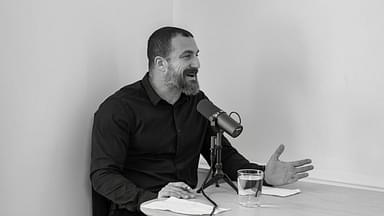Social interaction has often been associated with brain health and mental well-being ever since the pandemic turned into an obstacle for it. The masses began witnessing a change in the way they socialized with the increase in the usage of social media and remote working habits. Neuroscientist Dr. Andrew Huberman observed this and was curious to establish a link between the quality of social interaction and social media.
In a conversation with fellow neurobiologist Dr. Kay Tye, the Stanford professor sought to understand if the interaction occurring on a virtual medium held any actual “nourishment.” Or did socializing hold quality only when done in real life?
The conversation began with Dr. Huberman reminiscing about how the world slowly became isolated during the pandemic. He recalled how he felt lonely and resorted to staying updated with friends through social media posts and interactions. In recent years, as the world gradually began opening up, once again, he compared the experience with a recent chat with a friend over dinner in the real world.
The question that the neuroscientist raised was: How would one judge the quality of the two kinds of social interaction? Would they hold the same value, or would one consider one to be of lower quality?
“I think social media… could do either one of two things…- either going on Instagram and seeing a lot of familiar faces…could make me feel like I’m getting some social interaction…or perhaps it’s the equivalent of calories that then makes me feel more isolated when I’m not in the app.”
To this, Dr. Tye presented a study that tied up the concept of social homeostasis, which is the method by which an individual would regulate the quality and quantity of social interaction. The challenge was to determine the subjective nature of each interaction.
“I think it really depends; I mean, social media is such a large category you can have many different types of responses.”
Generally, Dr. Tye points out how having a proper conversation, either in person or even on the phone, taps into individuals’ interbrain synchronization. This point meant that while social media was easy and accessible, the interaction didn’t nourish and instead led to a withdrawal.
Dr. Tye reveals to Dr. Andrew Huberman her opinion on social media interaction
Having established the difference between in-person vs. social media interaction, Dr. Tye confessed that looking through Instagram to stay updated wasn’t her cup of tea. To fully nourish her need for socializing, the neurobiologist admitted that she’d rather catch up with someone in person.
She also believed that mediums like Instagram blasted the idea of interaction through various posts or stories. This phenomenon not only discouraged quality interactions but also presented a situation she’d never consider herself indulging in. The duo concluded that, while there were various mediums to interact and socialize, nothing could beat an in-person conversation.




